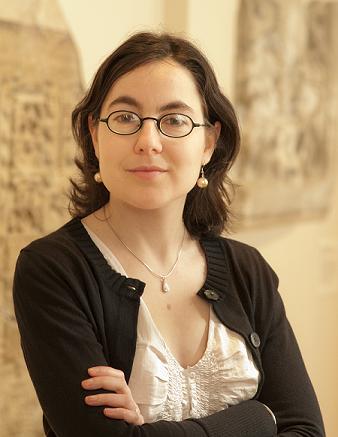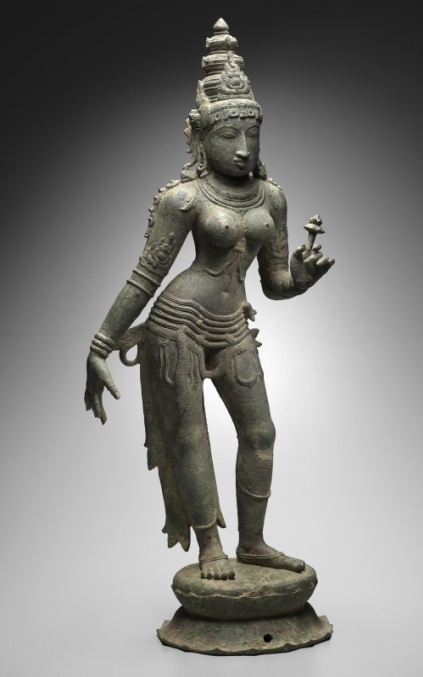Contribute
| A Hindu Goddess Emerges From Storage |
Laura Weinstein
01/31/2011
A Hindu goddess emerges from storage
In 1964, the Museum of Fine Arts, Boston, purchased a bronze statue of a goddess from the famous art dealer Nasli Heeramaneck. Heeramaneck, born in Mumbai in 1902, was an Indian Parsi. His family had a long history of collecting art and his own father was an art dealer, so it was natural that he opened his own gallery in Paris and later in New York. Over time, he developed an unusually fine eye and gathered together one of the best collections of Indian sculpture in the country. The MFA acquired over one hundred objects from Heeramaneck as gifts and purchases, one of the greatest of which is the bronze goddess shown here.
When it first arrived at the MFA, in 1964, curators identified the figure as a Chola bronze. Bronzes made during the rule of the Cholas (10th to 13th century) over a region of South India had long been among the most sought after types of Indian sculpture because of their beauty and naturalistic grace, and this bronze was no exception. It seemed to be an image of the goddess Lakshmi, although in their notes the curators admitted confusion since the lotus in her hand resembles that which Bhudevi usually carries.
Later that year, scientists at the MFA studied the bronze carefully under ultra-violet light and by examining small samples of the metal under a microscope. These studies showed that the bronze had been buried in or near a stream for some time, and that as a result, small plant roots had grown into the thick corrosion layers. In addition, a thin layer of earthy deposits had formed, another sign that it had sustained a long period of burial. These provided clues about the early history of the object: it was probably removed from a temple long ago during a period of upheaval and buried for protection. Further analysis identified the metal as bronze, a copper-tin alloy, typical for bronzes from the period.
Since the 1960s, the bronze has only occasionally been on view in the South Asian gallery, but when the gallery is re-installed in late-2011, it will emerge once again. In the meantime, the sculpture will be carefully cleaned as well as subjected to a round of scientific analyses using the latest techniques. Samples will be taken so that the metal composition can be more fully determined, which may aid in efforts to determine the location of the bronze’s production, and X-radiography will be carried out to investigate the methods of construction. It is yet not clear if scientific analysis will allow actual dating of the sculpture, but all possible methods will be pursued and new information will surely come to light.
Many questions linger about this lovely Hindu goddess, but one thing is quite clear: Heeramaneck’s eye guided him well when he picked this sculpture out, and it deserves an honored place in the new gallery.
You may also access this article through our web-site http://www.lokvani.com/

